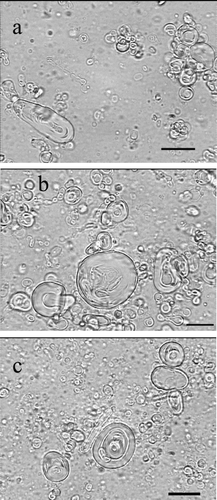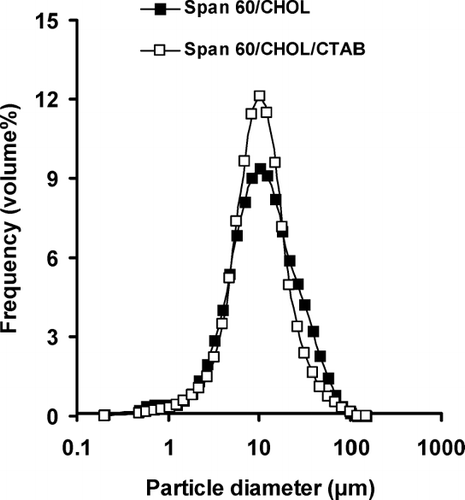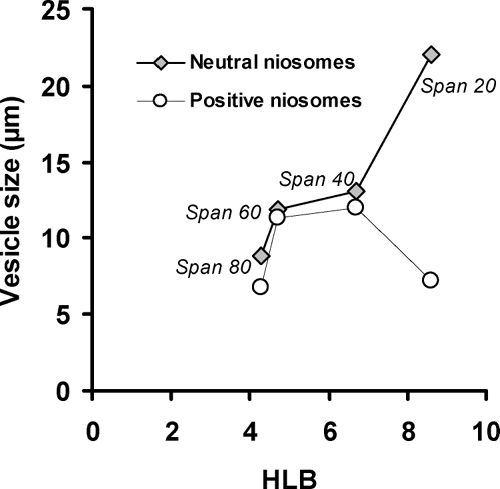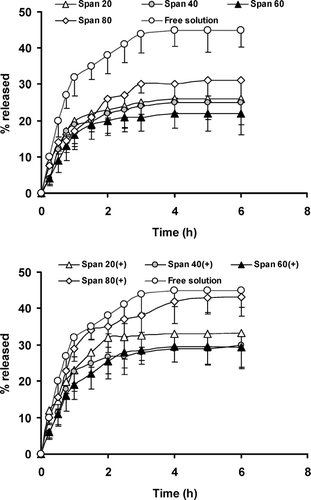Figures & data
TABLE 1 Composition of caffeine loaded niosomes, mean volume diameter of vesicles, and caffeine encapsulation efficiency at different time intervals after preparation and storage at 4°C.
FIGURE 1 Optical micrographs (× 1000 magnification) of caffeine-containing niosomes prepared by film hydration method. Niosomes were composed of (a) Span 20/CHOL/CTAB, (b) Span 60/CHOL, and (c) Span 40/CHOL. Scale bar = 10 μ m.

FIGURE 2 The vesicle size distribution of caffeine-containing niosomes prepared by film hydration method. Niosomes were composed of span 60/CHOL (7:3 m.r.) or span 60/CHOL/CTAB (5:3:2 m.r.).

FIGURE 3 The effect of surfactants HLB values on the mean volume diameter of neutral and positive niosomes.

FIGURE 4 Permeation profiles of caffeine through cellulose acetate after application of drug-containing neutral or positively charged niosomal formulations and free drug solution using Franz diffusion cells. Each point represents the mean ± SD (n = 3).

TABLE 2 Diffusion exponent (n) of Peppas model, calculated release rate (K) constants, and regression coefficient (r2, in brackets) of caffeine release data from studied niosomes according to different kinetic models